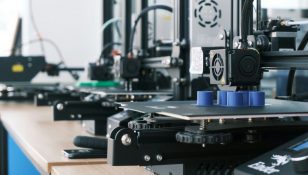Thermometer App: A Comprehensive Guide for Tech Enthusiasts

Introduction:
In today’s digital era, technology has automized several aspects of our lives, including our health monitoring. One significant advancement is the “Thermometer App,” a smartphone application that allows users to measure body temperature accurately and conveniently. In this article, we will explore the features, benefits, and historical development of thermometer apps, providing essential information for individuals interested in this topic.
I. An Overview of Thermometer Apps:

Thermometer apps are software applications developed for smartphones to measure body temperature. These apps utilize the phone’s internal sensors, such as the ambient temperature sensor or infrared sensor (for compatible devices), to calculate and display accurate temperature readings. They provide an alternative to traditional mercury or digital thermometers, making temperature monitoring hassle-free and easily accessible.
Key Features of Thermometer Apps:
– Precise Temperature Measurements: Thermometer apps offer accurate temperature readings, ensuring reliability for users’ health monitoring.
– User-Friendly Interface: These apps have intuitive and easy-to-navigate interfaces, making them accessible to users of all ages.
– Integration with Health Platforms: The apps often integrate with health platforms, allowing users to track and analyze temperature data over time.
– Fever Notifications: Some thermometer apps provide fever notifications, informing users when their temperature exceeds a specified threshold.
– Sharing and Exporting Data: Users can share or export temperature data for medical purposes or consultation with healthcare professionals.
II. Historical Development of Thermometer Apps:
The development of thermometer apps can be traced back to the rise of smartphones and the increasing demand for health-related applications. Initially, thermometer apps were basic and less accurate, relying on external temperature readings without considering ambient conditions. However, with technological advancements, these apps have evolved significantly to offer more precise temperature measurements.
1. Early Developments
:
In the early stages, thermometer apps relied on external temperature readings through plug-in sensors attached to smartphones. These sensors were often unreliable and led to inaccurate measurements. The lack of integration with built-in phone sensors limited their effectiveness.
2. Integration with Internal Sensors
:
As smartphones evolved, built-in temperature sensors became more prominent. This allowed developers to create thermometer apps capable of utilizing these sensors, resulting in more accurate measurements. The integration of these sensors enhanced the reliability and user experience of thermometer apps.
3. Advanced Features
:
With further advancements, thermometer apps started incorporating more sophisticated features. Some apps began utilizing infrared sensors found in smartphones with certain models, enabling non-contact temperature measurements. Additionally, the integration of artificial intelligence and machine learning algorithms enhanced the apps’ precision and ability to interpret temperature data.
III. Optimizing Text for Featured Snippets:
To increase the likelihood of the article being featured as a snippet on Google search results, it is essential to structure the text effectively. Here is a recommended structure with bullet points:
I. Introduction
– Overview of thermometer apps and their significance in the digital era
– Importance for individuals interested in health monitoring technology
II. An Overview of Thermometer Apps
– Precise temperature measurements
– User-friendly interface
– Integration with health platforms
– Fever notifications
– Sharing and exporting data
III. Historical Development of Thermometer Apps
1. Early Developments
2. Integration with Internal Sensors
3. Advanced Features
IV. Conclusion
Conclusion:
Thermometer apps have revolutionized health monitoring, providing accurate and accessible temperature measurements. Their historical development showcases the progression from basic external sensors to enhanced integration with internal smartphone sensors and advanced features like non-contact measurements. As technology continues to evolve, these apps are likely to offer even more innovative functionalities in the future. For tech enthusiasts interested in health tech, thermometer apps represent a convenient and valuable addition to their smartphone toolkit.

















